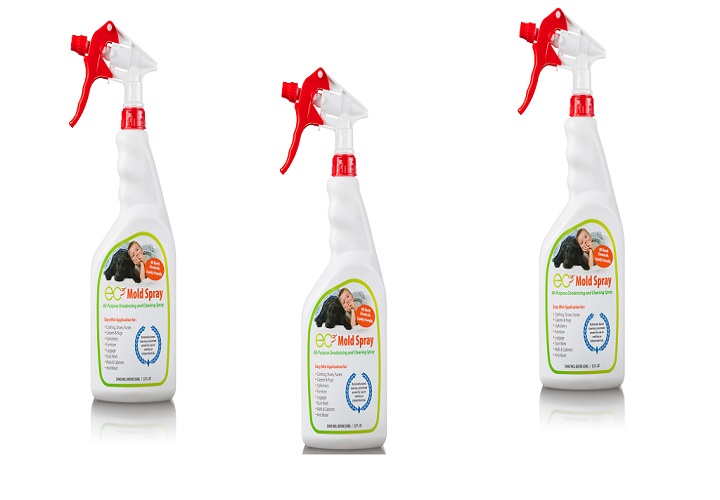Mold growth on wood surfaces is a common issue that can compromise the integrity of your home and pose health risks. Addressing mold promptly and effectively is essential to preserve your wooden structures and ensure a healthy living environment.
If you want to maintain the quality of your wood furniture or furnishings, incorporating a spray-on mold cleaner into your cleaning regimen can do a lot to remove and prevent future mold growth in your home.
The Importance of Removing Mold from Wood
Mold thrives in damp, humid conditions and can rapidly spread across wooden surfaces. If left untreated, mold can weaken wood fibers, leading to structural damage and unsightly stains. Additionally, mold spores can trigger allergic reactions, respiratory problems, and other health issues, particularly in individuals with sensitivities.
You can recognize mold in wood when patches of black, brown, or green appear on the surface that are distinct from the natural grain and color of the wood. Also, the patches may grow larger if left for a longer time.
Also, there will be a musty scent that emanates from the wood, and this is often a distinctive scent that comes from mold. Therefore, timely mold removal is crucial to maintain both the aesthetic and structural integrity of your home.
Essential Tools and Materials
Before starting the mold removal process, you need to gather the necessary supplies to ensure safety and effectiveness. Make sure to have the following: :
- Protective Gear
Gloves, dust mask, and safety glasses to prevent exposure to mold spores.
- Cleaning Agents
Detergent, a mold solution, and spray on mold cleaner are needed to ensure that the area is completely clean and sanitized.
- Scrubbing Tools
Stainless steel scrubber for effective mold removal.
- Drying Aids
Paper towels and a fan to dry the treated areas.
- Specialized Equipment
A high-efficiency particulate air (HEPA) vacuum that can capture fine dust and mold spores.
The Mold Removal Process
Inspect and Identify Moisture Sources
Begin by thoroughly inspecting the affected area to identify and locate the source of moisture that is fostering mold growth. Common sources include leaks, high humidity, or inadequate ventilation.
Addressing the moisture source is critical because mold will continue to proliferate and damage the wood if the underlying issue remains unresolved. If the moisture source cannot be identified or repaired, it is advisable to consult a professional mold remediation specialist, especially for extensive mold infestations exceeding 10 square feet.
Prepare the Area for Cleaning
Ensure your safety by wearing protective gear, including gloves, a dust mask, and safety glasses. Open windows and doors to facilitate ventilation and reduce exposure to mold spores during the cleaning process.
Remove objects that are in the area, or are contained in the furniture, so that the mold solution can be applied on every surface where mold is present.
Initial Cleaning and Scrubbing
Apply the detergent or a mold spray on cleaner to the moldy wood, taking care not to oversaturate the material. Using a stainless steel scrubber, gently scrub the wood surface to dislodge mold colonies. Continue scrubbing until the mold is visibly removed from the wood.
Disinfecting the Wood
After scrubbing, you can use disinfectant wipes or a sanitizer to thoroughly sanitize the cleaned area. This step helps eliminate any remaining mold spores and prevents future growth. Allow the disinfectant to sit for the recommended time to ensure maximum efficacy.
Drying the Treated Area
Dry the wood completely using paper towels to absorb excess moisture. Setting up a fan near the treated area accelerates the drying process. For best results, allow the wood to dry for at least 24 hours, ensuring that all moisture has been removed to inhibit mold recurrence.
Vacuuming Residual Spores
Use a HEPA vacuum to clean the wood and surrounding areas. HEPA vacuums are equipped with filters capable of trapping microscopic mold spores, preventing them from spreading to other parts of your home.
Do a Final Inspection and Repeat if Necessary
After completing the cleaning process, inspect the wood for any remaining mold stains or odors. If mold persists, repeat the cleaning and disinfecting steps. Removing mold from wood requires a methodical approach that prioritizes safety, thorough cleaning, and moisture control.
Adding a spray on mold cleaner as part of your mold removal process can effectively eliminate mold, preserve your wooden surfaces, and safeguard your health.
For more information about Sanitizer Fogger and antifungal nasal spray Please visit: Micro Balance Health Products.



